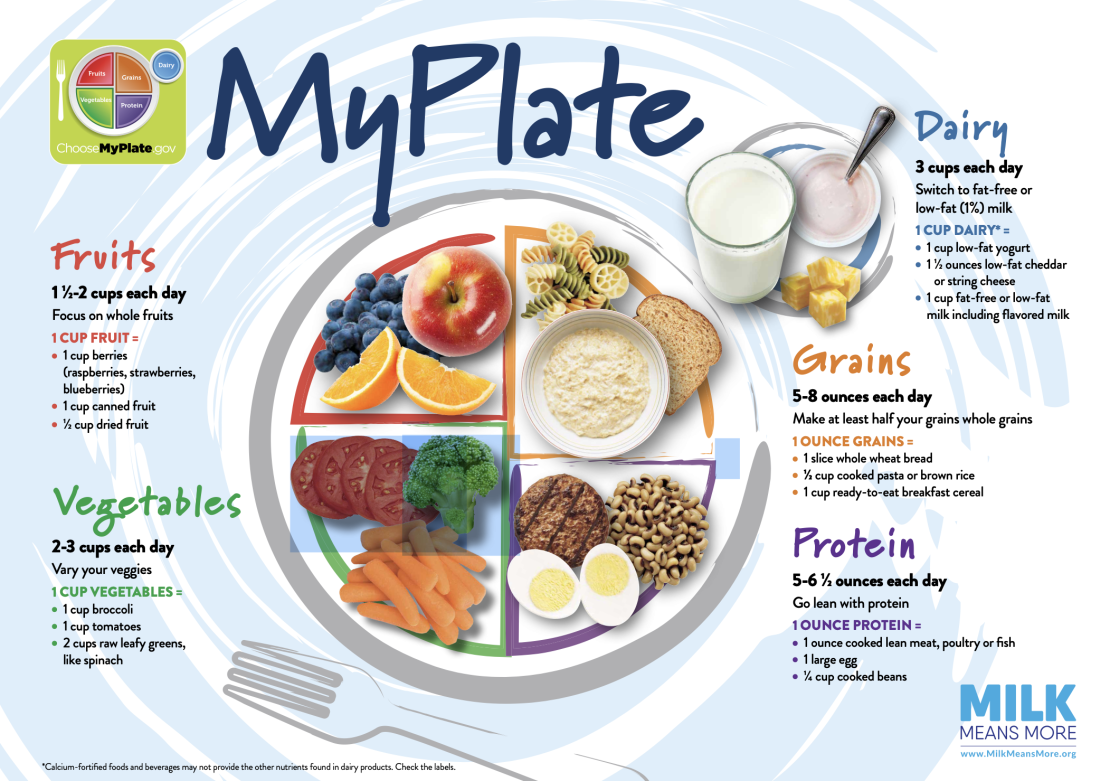
Nutrition & The Body
The Food Pyramid vs MyPlate.

The MyPlate diagram and the Food Pyramid are two distinct nutritional tools developed by the United States Department of Agriculture (USDA) to guide individuals in making healthy food choices. The Food Pyramid, introduced in 1992, served as a visual representation of recommended portions for each food group, but it was criticized for its lack of clarity and potential influence from the agricultural industry. In response, the USDA replaced it with MyPlate in 2011, which uses a simple plate design divided into four sections that represent different food groups.
The major differences between the two models include their presentation, emphasis on certain nutrients, and additional guidance provided alongside these diagrams. MyPlate strives to be an easily understandable model that promotes portion control and balance among various food groups. It also puts more focus on incorporating fruits and vegetables into one's diet while reducing solid fats, added sugars, and sodium intake. Furthermore, MyPlate is accompanied by additional resources such as ChooseMyPlate.gov website which provides personalized plans based on age, gender, and physical activity levels.
How Your Body Generates Energy.

The human body is a highly efficient energy-generating system that constantly converts food into usable energy to fuel its countless functions. Through complex biochemical processes such as digestion, absorption, and cellular respiration, our bodies break down nutrients like carbohydrates, proteins, and fats into glucose molecules. These molecules are then transported to cells and harnessed as chemical energy in the form of adenosine triphosphate (ATP).
The primary energy production process is cellular respiration, which occurs in three stages: glycolysis, the Krebs cycle, and oxidative phosphorylation. Glycolysis takes place in the cytoplasm and results in pyruvate molecules being produced from glucose. The Krebs cycle operates within mitochondria, generating electron carriers that transport high-energy electrons to the final stage of oxidative phosphorylation. Here, these electrons power an intricate electron transport chain that drives ATP synthesis.
Aside from glucose metabolism, our bodies also utilize alternative sources of fuel when necessary. During periods of fasting or intense physical activity where glucose levels drop significantly, fats stored within adipose tissues can be broken down into fatty acids through lipolysis. Fatty acids undergo beta-oxidation in order to yield acetyl-CoA molecules that can enter the Krebs Cycle for further processing. When carbohydrate stores become extremely depleted during prolonged fasting or extreme exercise conditions, our bodies resort to using protein as an energy source by converting amino acids into glucose via gluconeogenesis.
Energy generation within the human body is a dynamic and adaptable process that caters to specific physiological demands at any given time. This remarkable ability enables us to maintain optimal function even under varying circumstances such as changes in dietary intake or increased physical exertion. Furthermore, understanding how our body generates energy not only provides insight into essential metabolic pathways but also highlights potential avenues for developing therapies targeting metabolic disorders or enhancing athletic performance through nutritional strategies and training regimens.